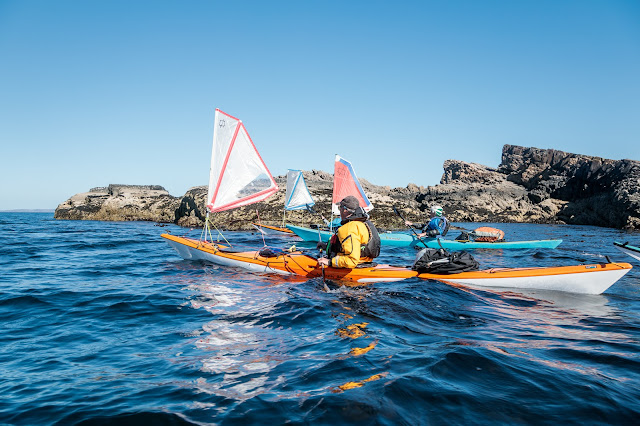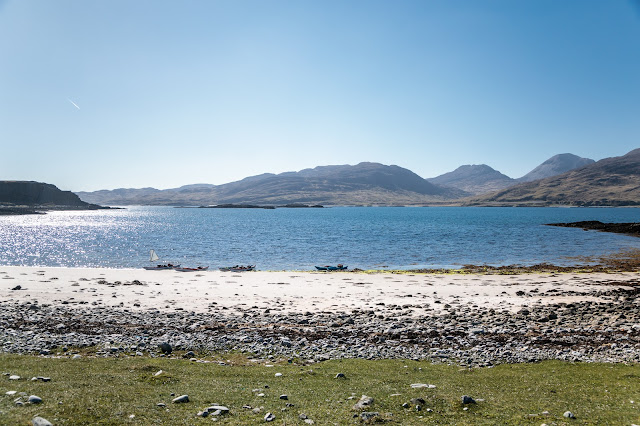On the second day of our trip to Orondsay and Colonsay we woke before dawn and were breakfasting by the time the sun rose above the hills of Jura.
It is always exciting setting off to a new island and neither Sam, Maurice nor...
...Ian had been before but David and I had circumnavigated Oransay and Colonsay from Islay and returned via Jura in September 2009.
We set off across the mouth of West Loch Tarbert leaving Glenbatrick and Lord Astor's summer house...
...far behind.
A fair wind soon carried us...
...across to Ruantallain.
Ruantallain was an ancient stopping off place on the voyage across to Oronsay. Our ancestors often had to leave the corpses of their dead here, if it was too rough to cross. The corpses were left in the Corpachs or "dead caves" at the foot of the raised sea cliffs behind the beach. Along the cliff faces, the dark entrances to the caves were like the empty eye sockets of the skulls within.
Not far from the shore lies the ruined farm stead of Ruantallain, which was finally abandoned in 1947. One half of the cottage with the tin roof is a locked estate refuge the other is an unlocked simple estate bothy. Tony and I had intended staying here here in June 2007 and David, Jennifer, Phil and I again considered it in September 2009. Our present little party had wondered why I did not consider staying here the previous evening. They were about to find out!
Tony and I were well tired when we arrived late in the day in 2007. The door creaked open and we let a little light into the gloom within. Two red eyes glared at us from the chair. It was a huge bothy rat. With great presence of mind Tony grabbed a log from a wood pile at the door and thew it at the rat. Any normal bothy rat would have bolted for its hole but this one charged at us. We fled to the shore. Where we pitched...
..our tents on the rather stony grass above the high tide mark.
It did not take long to discover that Ruantallain was a vipers's nest, literally hoaching with adders. Of course in the evening and morning these cold blooded creatures are less likely to slither away form your approach and are more likely to strike if you have not noticed them in time.
Now David knew all about the bothy rat and adders of Ruantallain, so like me he hung about the shore. The others thought I was prone to exaggeration and set off to the bothy discover for themselves... Well only Sam made it as far as the bothy. As soon as Ian and Maurice had left the beach they came across a coiled viper in the strike position. That was it, they went no further and reappeared on the beach with some undue haste. David and I nodded sagely at one another.
It was now time to set off from Jura across the sea to Oronsay and Colonsay. Fortunately our party had survived both rats and adders and so remained complete. We did not need to leave any dead in the Corpach of Ruantallain.
You can also follow this trip on
Ian's blog here...







































